How to Find the Right Size Rug for Your Space
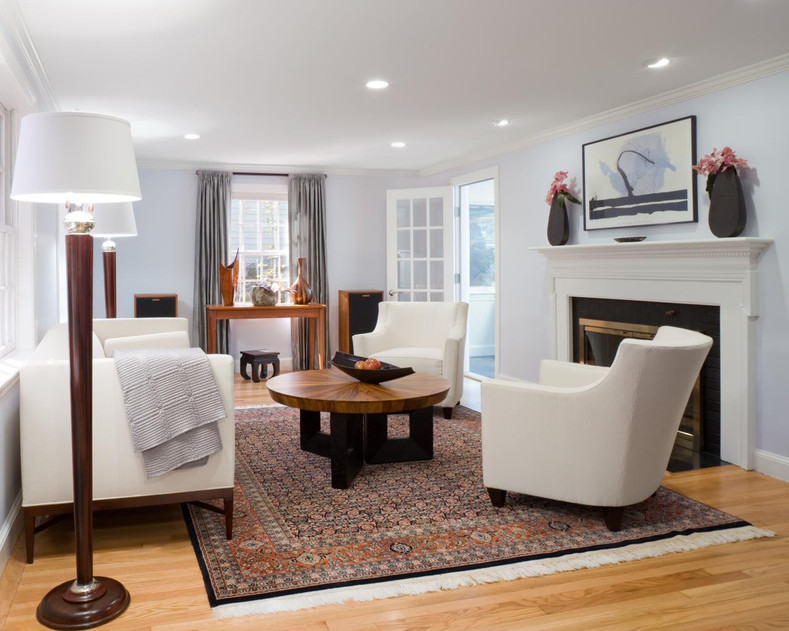
Browsing online you’ll find a number of size and fitting guides written by different designers and rug establishments detailing how you should place a rug in your home. We feel that the purchase of a hand-knotted rug is personal and thus, we always recommend, that above all else, customers choose the rug that they like – regardless of any trending rules and styles.
For the purpose of our size & fitting guide we have outlined the most common size & fitting related questions that we are asked by our customers. The answers provided are based on the benefit of our experience and what we feel best suits the typical Australian home.
I hope that you find our guide helpful. Please feel free to share and comment. If you have a question or would like to request additional info, please email us info@persianrugs.com.au.
Special thanks must go to Cassandra Bobby for her amazing illustrations!
What size rug should I buy?
This is one of themost common questions that we are asked by our customers. The traditional rule of thumb is the bigger the rug the better – although this can vary depending on the type of room and décor.
The introduction of a large rug in to a room can help define a setting and add a sense of elegance and comfort. A larger rug can also have the added effect of protecting your flooring. Choosing a larger rug will allow you to position your furniture on the rug itself, which can help to anchor the rug to the floor.
It is aesthetically pleasing for a large area rug to be surrounded by a perimeter of flooring. We recommend that in most cases there should be a minimum of 50 to 75cm space between the skirting board of wall to the edge of a room-size rug.
The most common room-size rugs are 400x300cm, 350x250cm, 300x250cm, 300x200cm, 250x150cm & 200x150cm.
…for my Living Room?
We believe that a living room should be a place of relaxation and comfort. A well sized, well positioned rug makes all the difference when it comes to create a mood or setting. The three most common sizing styles of rugs for living rooms are illustrated below.
Living Room Setting (a) - In this setting all of the lounge room furniture sits entirely on a large or oversized rug (usually measuring 350x250cm+).
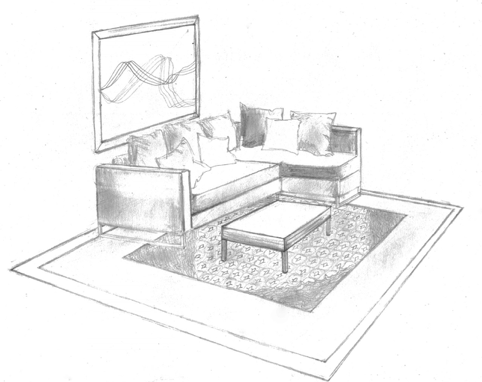
Living Room Setting (b) - In this setting the lounge suite sits on a portion of the border. This setting works best when space is a bit more limited. The traditional rule of thumb is that the lounge suite should not sit onto the field of a traditional rug.
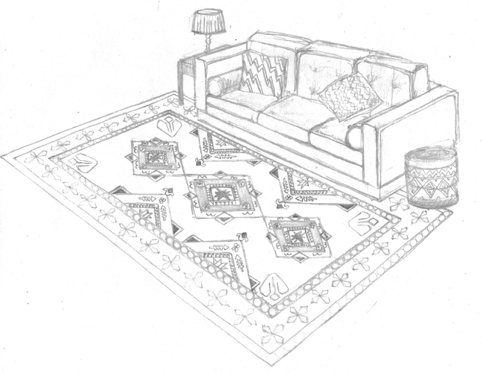
Living Room Setting (c) – In this setting the lounge suite sits away from the rug. A smaller room-size rug (200x150cm+) is suitable depending on the size of your room and lounge suite.
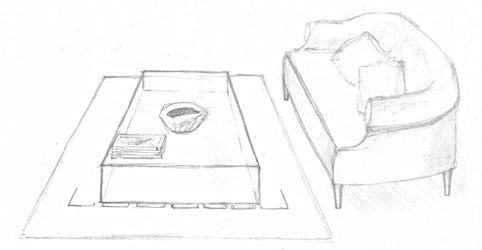
Paul: 'On a personal note, I always like the idea of being able to sit on a lounge suite in a living room, and have my feet rest on the actual rug rather than on the hard floor.'
…for my Dining Room?
Your dining table and chairs should be positioned on the centre of your rug. When choosing a rug size it is important to make sure that the dining chairs stay on the rug when the chairs are fully extended outwards. There is nothing more frustrating than dining chairs catching on a rug edge when the chairs are pulled in and out.
The average dining table in an Australian home is 90cm to 120cm wide and approximately 210cm long. Add 70cm to each side of the width of the table to allow for your chairs to be pulled out - hence the ideal rug width is usually between be 230 to 260cm.
If space is a problem, it's ok to go with a shorter length, but in most instances a narrower carpet below 210cm is not recommended.
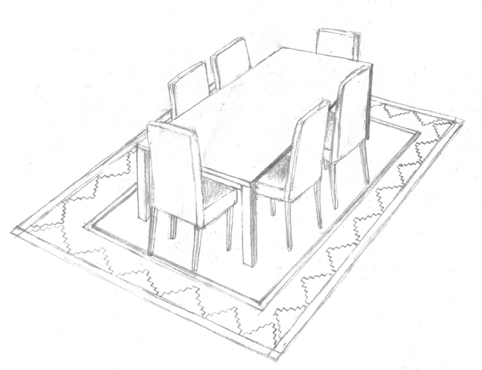
Our Tip: Dining room tables placed on top of rugs interrupt the central designs. Open field designs, as opposed to central medallion designs, are better suited to sit under dining room tables.
…for my Bedroom?
The illustrations below are of the two most common rug styles for bedroom settings. Both settings are great in that they allow you to jump out of bed straight on to the rug.
Bedroom Setting (a) - This is the most common of the two bedrooms. Choose a large rug that extends under the bed just shy of the bedside tables. This will allow you to jump out of bed straight onto your rug.
If you have a Queen sized bed or larger, we recommend at least the 300x200cm size. For a king sized bed in a larger room, 300x250cm will work better.
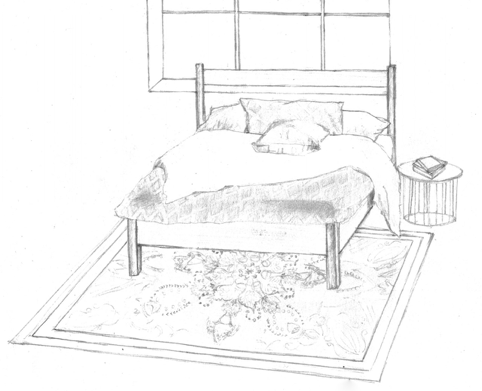
Bedroom Setting (b) - Another common option is to use smaller scatter rugs, approximately 200x100cm on either side and another at the base of the bed - This positioning results in a less formal bedroom setting.
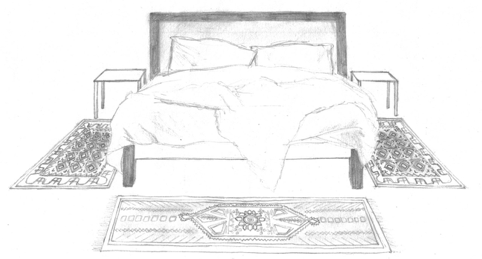
…for my Hallway?
The ideal size of the runner will depend on the length of your hall. When choosing a runner allow approximately 20cm of flooring on either side of the width and approximately 25cm to 50cm on either side of the length.
If a hallway is long, then you can choose either a single long runner or a matching pair of runners. A single hallway runner will have the effect of lengthening a hallway whilst a pair of two or more runners has an effect of shortening the length of the hallway.
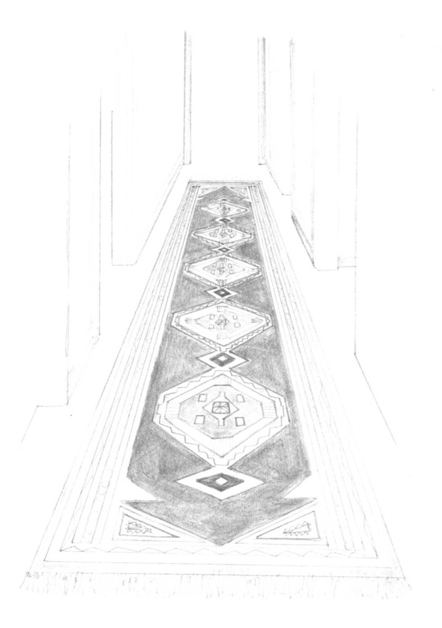
How should I position a rug on my staircase?
Allow approximately 10cm on either side of your runner between the bannister and the wall skirting - So if the staircase is 100cm wide then the runner should be between 80 to 85cm wide. In Victorian & Federation style homes, brass rods can be used to hold the runner in place.
In a traditional home runner should start at the first riser of the top stair and end at the last tread of the bottom (Please see illustration below).
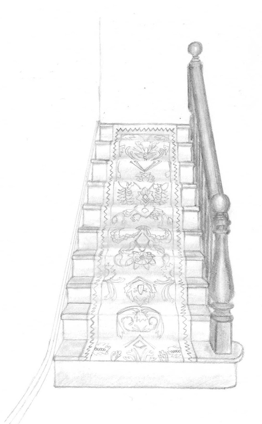
Our Tip:Trying to figure out the length of a runner required for a staircase can be timely and frustrating. Use a length of string and masking tape to run the string along the rise and the tread of each stair. Taping the string flush to the floor as you go. Cut the string and measure, this will give an length of the runner and eliminate the need for complicated calculations.
Other Tips & Tricks
- If your dining and lounge room are open plan and adjoining, separate rugs in each area will help define the spaces.
- If you are having trouble visualising a rug in a room, find a reputable rug dealer that allows for their rugs to be released on authority and try one in your space before purchase.
- Hand-knotted rugs have a dark & light side. This is because the knots are put in at a slight angle and one side reflects the rug. Traditionally, rugs are placed so that the light side of the rug is facing the point of entry in a room.
